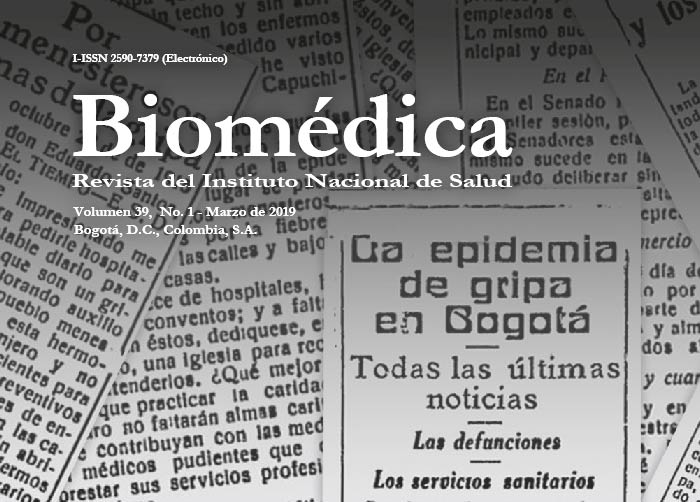Risk factors associated with the metabolic syndrome in Cali, Colombia (2013): A case-control study
Abstract
Introduction: In 2016, the World Health Organization reported that more than 2 billion adults were overweight, of whom 600 million were obese, 347 million had diabetes mellitus type II, and people with hypertension had increased from 600 million in 1980 to 1 billion in 2010. Additionally, 20% of the world’s adult population will develop metabolic syndrome during their lifespan with tremendous effects for their wellbeing and the health systems.
Objective: To identify social, biological, and behavioral factors associated with the metabolic syndrome in adults to help in the design of health policies in urban environments.
Materials and methods: We included 300 cases and 675 controls. For cases, the waist circumference (abdominal obesity) in men was ≥94 cm and ≥88 cm in women, and other two factors should be present including hypertension, high glycated hemoglobin, high triglycerides, and low HDL levels. Controls presented only one or none of these risk factors.
Results: The total prevalence of metabolic syndrome was 30.2%, 33.6% in females, and 25.6% in males. Therefore, females had a higher risk of developing a metabolic syndrome (OR=1.70; 95% CI 1.17-2.47). Being a mestizo also increased the risk of having metabolic syndrome (OR=1.55; 95% CI 1.10-2.19). In contrast, frequent fruit consumption and being a housekeeper were protective factors: OR=0.83; 95% CI 0.69-1.00, and OR=0.58; 95% CI 0.36-0.92, respectively. Logistic regression showed that obesity had the strongest association with metabolic syndrome (OR=7.52; 95% CI 4.79-11.80). Increasing age yielded a linear trend with regard to metabolic syndrome: the OR for the 40 to 49-year-old group was 4.24 (95% CI 2.20-8.16), for the 50 to 59-year-old group, 4.63 (95% CI 2.40-8.93), and for those over 80 years of age, 5.32 (95% CI 1.92-14.71).
Conclusion: Obesity was the main risk factor associated with the metabolic syndrome. Our findings can help health policy makers to design interventions for metabolic syndrome control in urban populations in Colombia.
Downloads

| Article metrics | |
|---|---|
| Abstract views | |
| Galley vies | |
| PDF Views | |
| HTML views | |
| Other views | |

























